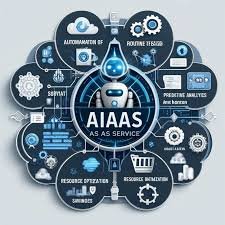“Exploring AI Innovations: DALL-E, Data Transformation, and Automation Science”
INTRODUCTION:
Artificial Intelligence (AI) has become a pivotal force in today’s technological landscape,ai data dalle ai web automation science intro permeating nearly every sector and transforming the way we interact with data and digital media. From generating images to automating mundane tasks, AI is reshaping our capabilities and expectations . This blog post examines advancements in AI,ai data dalle ai web automation science intro focusing on DALL-E AI, Web AI,ai data dalle ai web automation science intro and the broader implications of automation science. Additionally, we will introduce the foundational concepts of AI and explore how these innovations are functioning,ai data dalle ai web automation science intro symbiotically to enhance modern applications ai data dalle ai web automation science intro.

What is AI?
Artificial Intelligence is a branch of computer science that aims to create systems capable of performing tasks that typically require human intelligence. These tasks may include reasoning, learning, problem-solving, perception, language understanding, and even creativity. AI systems utilize algorithms and large datasets to recognize patterns, make decisions, and improve their performance over time. By harnessing the power of AI, we can solve complex problems, enhance productivity, and gain insights from vast datasets.
DALL-E: The Creative Potential of AI:
One of the most fascinating advancements in AI is DALL-E, a model developed by OpenAI that is capable of generating images from textual descriptions. Named after the surrealist artist Salvador Dalí and Pixar’s Wall-E, DALL-E showcases the potential of AI to produce imaginative visuals based on prompts provided by users.
How DALL-E Works:
DALL-E employs a variant of the GPT-3 architecture, which utilizes a neural network trained on a vast dataset of images and corresponding text. When a user inputs a description, DALL-E interprets the text and generates a visual representation that embodies the essence of the prompt. This ability to translate language into imagery is unprecedented and opens new avenues for creative expression in art, advertising, design, and education.
Applications of DALL-E:
The applications of DALL-E are as diverse as they are intriguing. Artists and designers can leverage DALL-E’s capabilities to brainstorm and generate concepts, aiding creativity and innovation. Marketers can utilize DALL-E to create tailored visuals that resonate with specific target audiences, while educators can use it as a tool to illustrate complex ideas in a visually engaging manner.
However, the rise of such powerful image-generating AI also raises ethical considerations regarding the authenticity of art and the implications of AI-generated content on copyright and creativity.
Web AI: The Future of Online Interactions:
Web AI refers to the integration of artificial intelligence into web services and applications to enhance user experiences and streamline processes. As the internet evolves, the demand for personalized, intelligent interactions continues to grow. Web AI systems can provide real-time recommendations, automate customer service, and analyze user data to improve website functionality.
Enhancements Through Web AI:
- Personalized User Experience: This practice is prevalent in streaming services, e-commerce websites, and social media platforms.
- Chatbots and Virtual Assistants:Virtual assistants help users navigate websites and services, enhancing overall satisfaction.
Automation Science: The Backbone of AI Integration:
As AI technologies continue to advance, automation science plays an essential role in enabling systems to operate efficiently and effectively. Automation science combines various disciplines, including computer science, engineering, and data analysis, to optimize processes through technology.
The Role of Automation in AI:
Automation empowers AI systems to perform tasks without human intervention, enhancing productivity and reducing errors. For instance, AI algorithms can be applied in manufacturing settings to streamline production lines or in logistics to optimize supply chain management ai data dalle ai web automation science intro. The synergy between automation and AI ultimately leads to smarter workflows and improved decision-making processes.
What is Artificial Intelligence?
At its core, AI refers to the development of intelligent agents, systems that can reason, learn, and act autonomously. These agents are designed to mimic human intelligence, enabling them to perform tasks that would typically require human cognition. AI can be broadly categorized into two types:
Key Concepts in AI:
Machine Learning: A subset of AI that involves training algorithms on large datasets to make predictions or decisions.
Deep Learning: A specialized form of machine learning that uses artificial neural networks to process complex data.
Natural Language Processing (NLP): The ability of machines to understand and interpret human language.
Computer Vision: The ability of machines to interpret and understand visual information 1 from the world.
Real-World Applications of AI:
AI has a wide range of applications across various industries:
Healthcare: AI is used to develop advanced diagnostic tools, personalized medicine, and drug discovery.
Finance: AI-powered algorithms are used for fraud detection, risk assessment, and algorithmic trading.
Autonomous Vehicles: Self-driving cars and trucks rely on AI to navigate roads and make real-time decisions.
Customer Service: AI-powered chatbots can provide 24/7 customer support and answer queries.
Education: AI can personalize learning experiences and provide intelligent tutoring systems.

The Future of AI:
The future of AI is promising, with the potential to revolutionize countless aspects of our lives. Some of the potential future developments in AI include:
Advanced Robotics: Creating more sophisticated robots capable of performing complex tasks.
Ethical AI: Developing AI systems that are fair, unbiased, and transparent.
AI for Social Good: Using AI to address global challenges such as climate change and poverty.
Conclusion:
The advancements underscore the transformative impact of on various industries ai web automation science intro.

